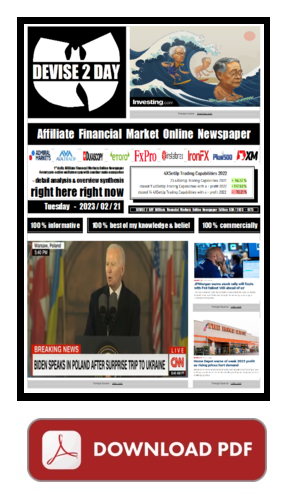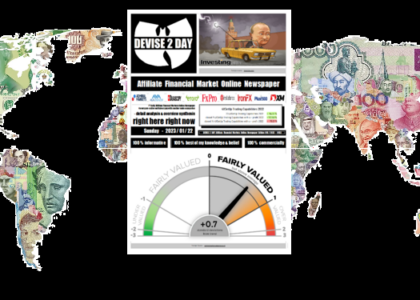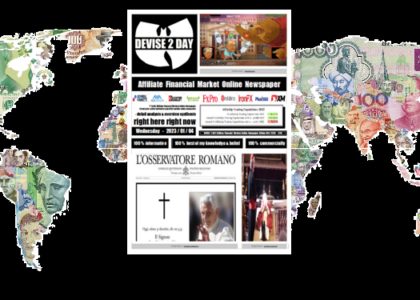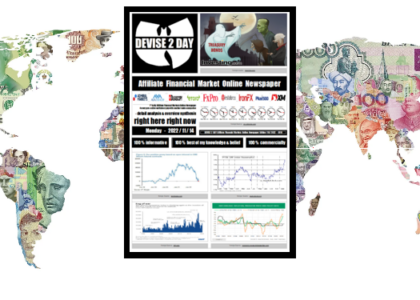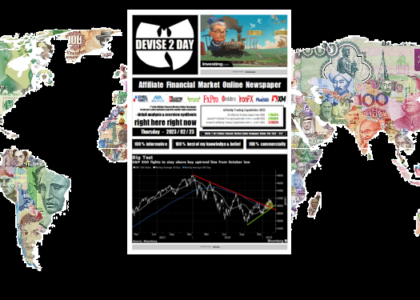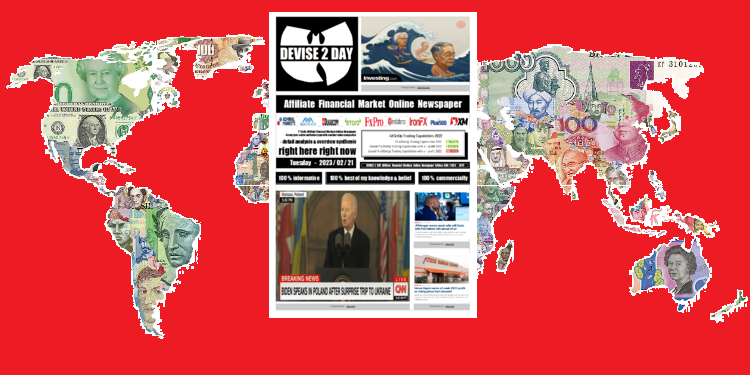
2023/02/21 (175.038) Technical Analysis – … & IDC-EURUSD
EURUSD Still On The Way To The Southeast
– If 1.0636 Fails, A Fall To 1.0459 & 1.0349 Is Possible!
Higher interest rates – longer than expected?
Capital is therefore not becoming scarcer – but more expensive!
A new era has dawned for the global economy and capital markets. The war in Ukraine completed the change of era that had begun during the corona pandemic. We are now in a growth regime characterized by structural upheavals. This new era of the “Great Transformation” will significantly shape the capital market environment in the coming years and directly influence investment decisions. The following major trend can be identified!?
The investment boom will not only affect growth potential and inflation, but also increase the equilibrium interest rate after inflation is deducted. Capital is becoming scarcer, real interest rates are rising. Savings that remain the same at best – i.e. the supply of capital – are faced with a structurally higher demand for capital. The effect on the price of money is clear. Interest rates must remain higher than in the past decade. However, we have already seen a significant increase in nominal interest rates over the past year, not least due to the much tighter monetary policy. The central banks in the USA and the euro zone, which are important for the capital market, will moderately raise their key interest rates in the first half of 2023 with the aim of bringing real interest rates into positive territory. Even if domestic savers are still left with a negative real interest rate after deducting current inflation, positive real interest rates cannot be expected until 2024 at the earliest if overall inflation falls.
The USD unexpectedly strengthened again – DXY still in three digits!
Will the seismic shift in capital flows continue to support our long EURUSD?
Things are happening on the bond and currency markets. Billions of capital are flowing back into Europe as the ECB has good reason to continue raising interest rates to combat high inflation, which in turn pushes up yields. The billions in bonds are returning to Europe as a result of the sharp rise in yields. This eventually reduces long-term currency pressures and supports the euro. A shift in capital flows suggests investors are bracing for a period of no central bank stimulus.
The pitch has recently turned out to be more falcon-like. With their statements, some members of the ECB ensured further increases in interest rate expectations. On Wednesday, Christine Lagarde made a clear position in a speech to the EU Parliament: The key interest rate will be raised from the current 3.0% to 3.5% on March 16. Although inflation has been moderating for three months, central bankers continue to stress that they are still a long way from defeating inflation. ECB Director Isabel Schnabel warned on Friday that the markets could underestimate the high inflation. Noting the strength of underlying price pressures and faster wage increases, she said “we may therefore need to act more vigorously.” It can therefore be assumed that the ECB will continue to raise interest rates after the March meeting. Increased interest rate expectations are driving European bond yields and could eventually lead to a reversal in capital flows, boosting the euro in the medium term.
Shift in capital flows in the markets
European bond and currency markets are experiencing a seismic shift in capital flows as market participants adjust to a world without central bank stimulus, Bloomberg reports. Three hundred basis points of rate hikes by the European Central Bank since July have halted the years-long exodus from the region’s fixed income funds. Net outflows, which totaled 818 billion euros ($872 billion) at the end of 2021 – the highest in at least two decades – have now been reversed, data from Deutsche Bank AG shows. Rising bond yields, along with relief that the war in Ukraine has not sparked a deeper energy crisis, are also removing a fundamental strain on the single currency. The positive development is even leading to a reallocation of capital from higher-yielding markets, such as US-denominated assets, to euro-denominated assets. “The underlying dynamics of capital flows are becoming significantly more positive for the euro this year,” said George Saravelos, the bank’s global head of FX research. “Money managers tell us they are seeing a wave of investment flows into European fixed income for the first time in a long time.”
Yields: Increased interest rate expectations
The ECB kept interest rates in negative territory for years to lower the cost of borrowing and bought up trillions of bonds to fight first sluggish growth and then the Covid outbreak, according to Bloomberg. Investors balked, reducing the share of euro-denominated bonds in European mutual funds by 14 percentage points between 2014 and 2021 – ultimately resulting in an underweight of half a trillion euros, according to strategists at Deutsche Bank.
Now that yields are at their highest in years and sentiment towards fixed income is far more positive as the ECB matches the Federal Reserve’s rate hikes, net flows should turn positive, according to Deutsche Bank data. Money markets expect the ECB to hike rates by almost 125 basis points more compared to an additional 75 basis points in the US. “The gap between Fed and ECB interest rates will close,” said Paul Jackson, global head of asset allocation research at Invesco Asset Management Ltd. “That’s why the euro is likely to continue to appreciate over the course of this year.” The reversal in capital flows is a key factor supporting Deutsche Bank’s optimistic long-term view, even as the resurgent dollar has pushed the EUR/USD cross lower this month. The euro traded around $1.07 on Friday, down from its recent high of $1.1033 on February 2nd.Improvement in euro inflows
The EU’s December balance sheet released on Friday pointed to an improvement in euro inflows, said Jordan Rochester, FX Strategist at Nomura. In addition to portfolio inflows, the current account continued to grow to a surplus of 16 billion euros, helped by lower energy prices. However, the repatriation of capital into the euro area is likely to be a multi-year, ebb and flow process: outflows slowed in the years leading up to the pandemic, only to return as a new round of stimulus measures pushed yields lower again pushed to gain weight again. And the sale of community bonds — seen as another potential catalyst for larger capital inflows — is likely years away. And that despite calls for joint issuance growing louder after the war in Ukraine underscored the urgent need to increase investment in defense and energy security.
Other positive factors are still at play
The cost of hedging US debt for foreign investors has skyrocketed, cutting into their returns as yields in their home markets become more attractive again. This will likely lead to a repatriation of capital to Europe, as has happened in Japan, where investors dumped a record amount of foreign debt last year. With lower energy prices pushing the EU’s current account surplus back up, it’s not inconceivable that the euro will eventually return to where it was trading before QE, according to Kit Juckes, chief global FX strategist at Societe Generale SA. The common currency hit a decade high of $1.40 in 2014.
“The ECB has pushed European investors out of European bonds and is now letting them back in,” he said.
Euro Nears 1-1/2-Month While Low Sterling Rises from 6-Week Low
The euro held below $1.07, hovering around its weakest level since January 6th, as investors rushed for the dollar amid expectations that the Federal Reserve would stick to its hawkish monetary policy for longer following the release of strong US labor data and hotter-than-expected inflation. Meanwhile, Friday’s core PCE price index could offer further cues on the tightening cycle path. In Europe, investors digested better-than-forecast business activity figures for February, which showed the Eurozone output growth accelerated to a nine-month high helped by improved supply chains and stronger demand, likely bolstering the case for the European Central Bank to continue raising interest rates. The bloc’s central bank hiked interest rates by 50 bps at its February meeting to the highest levels since late 2008, flagging one more increase of the same magnitude next month and reaffirming its commitment to battle inflation.
The British pound crossed the $1.21 level, recovering from a 6-week low of $1.19 hit on February 17th, as investors monitored stronger-than-expected PMI data and softer-than-feared inflation. Flash figures showed output for private sector business rebounded after six months of contraction, with both the manufacturing and service sectors achieving a return to growth, encouraging resilience of the economy. At the same time, headline inflation slowed more than expected in January to 10.1%, moving further away from October’s 41-year high of 11.1%, but remaining well above the central bank’s target of 2%. On the monetary policy front, UK policymakers raised interest rates to 4% this month, a 10th consecutive hike, and are expected to raise them just twice more to peak at 4.5% by June, with a risk that they stop earlier at 4.25%.
Italian 10-Year BTP Yield Rises to 7-Week High Wehile German 10-Year Bond Yield Steadies Around 2.5%
The yield on the Italian 10-year BTP rose to 4.4% in late February, the highest in seven weeks, as expectations of persistent interest rate increases by the European Central Bank extended their pressure on European debt prices. The ECB has already signaled another 50bps hike at its March meeting, while selected governing council members voiced the need for further tightening through the summer. Stronger-than-expected economic data added leeway for incoming hikes, with PMI numbers showing that the currency bloc’s private sector expanded more than expected in February. The German ZEW economic sentiment index also grew above forecasts. Domestically, Italy’s credit risk continued to worry investors as the highly-indebted country will place EUR 320 billion of medium and long-term BTP bonds with historically high-interest rates. The spread between the 10-year BTP and Bund widened to 185bps after touching a nine-month low of 170bps earlier in the month. Germany’s 10-year bond yield stabilized around 2.5%, not far from an 11-year high of 2.569% hit on December 30th, as traders ramped up bets that US Federal Reserve rates will be higher for longer following the release of data pointing to a still-tight labor market and sticky inflation in the world’s largest economy. At the same time, remarks by European Central Bank officials dashed hopes of a quick end to the current tightening cycle. President Lagarde reiterated the central bank would keep raising rates to slow down underlying price pressures, while ECB’s Chief Economist Philip Lane and fellow board member Fabio Panetta said the sharp increase in borrowing costs had yet to be fully felt by the economy. The ECB has raised its key rates by 50bps in February, and signaled another similar hike in March to extend its efforts against soaring inflation in the bloc. Markets are now pricing in a peak ECB rate around 3.75% by late summer, up from levels around 3.4% earlier this month.
good morning, good day, and/or good night
at whatever time, wherever you are !
right here right now :

